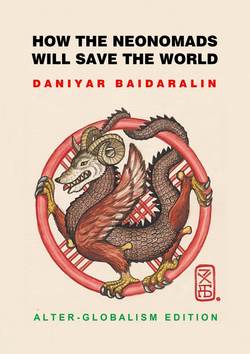Читать книгу How the Neonomads will save the world. Alter-globalism edition - Daniyar Z Baidaralin - Страница 9
THE CONCEPT: EURASIAN NOMADIC CIVILIZATION
The concept of Kósh
ОглавлениеSeasonal movements
The pastoral nomadism required well thought-out order and systemic approach. There typically were four seasonal movements, called qystau (winter camp), kókteu (spring camp), jailau (summer camp), and kuzeu (fall/autumn camp).
The overall traditional patterns of seasonal nomadic movements in Kazakhstan were as follows: the winter camps were located in the south, near the hills and mountains where the winters were relatively softer; the summer camps, on the opposite, were at the far north plains up to 1,500—2,000km (1,000—1,300 miles) away from the winter camps; where the summer heat wasn’t so scorching and grass still remained fresh for the cattle to feed on. The spring and fall camps were located intermediately in between.
The winter camps usually had some permanent structures, such as cattleyards, sheds, storages, outdoor kitchens, and sometimes even permanent houses, or at least heavy winter yurts that weren’t moved to the summer camps. This is where the nomads were seating and surviving the harsh Eurasian Steppe winters. The only outdoor activity at this time of year was hunting, as the travelling between the camps of different families and tribes were limited. This time was used mostly to make or fix equipment for the next season: sew new clothes or patch the old ones, weave wool goods, make leather goods, and etc.
The new year in the Great Steppe usually started on around March 20th each year during the spring equinox, when the duration of day and night were equal. The kickoff event was the Nauryz celebration, when the nomads came to see each other to make sure everybody survived the winter and the cattle made it too. The last remaining winter stores of food were consumed in a big communal feast in which everybody got to participate.
This is when the EN started leaving their winter encampments and moving towards their spring camping sites. The spring camps were typically located at hilltops or other shadeless places free of thawing waters and open to fresh air and sunlight. The pastures were full with new growing grass, and the cattle was gaining weight fast and also lambing and foaling was taking place. The cattle was sheared and this spring wool was called «dead wool» and stored for future use.
The next big seasonal move happened when the cattle ate all of the grasses around the spring camp and the heat and sunlight scorched the ground. Running away from deadly dry seasons, the nomads undertook a long migration towards their summer camping grounds in the north. This is where the sun is less ferocious and there are more small woods with protecting shade, and the rivers don’t run dry all year long. The summer nomadic camps always settled around riverbanks with access to water and cool air.
In the fall there is a third seasonal movement, now back towards the south. The fall camping could be at the same place as the spring one, or some other suitable place. This was the best time of the year for the nomads. The cattle is fat and plentiful, the people are healthy and full of energy. This is where many of the nomadic production works happen, such as mass cattle shearing (fall shearing), making felt for yurts, woodworking, and etc.
Also this is where the most delicious event in the nomadic life too place: the massive fall slaughter of cattle called «soghym». The carefully selected animals were slaughtered in large numbers, and their meat was salted and dried to be stored over long winter. This is the only time of year when there is plenty of meat for everybody to eat. And because of that, this is when most of celebrations take place, such as marriage brokerage and weddings.
After the end of fall season, nomadic families traveled to their winter facilities. Here they put their cattle in fenced yards and stored hay for winter. Once the snow fell the nomads were seating out for a few cold month: eating on their food stores, feeding the cattle with hay, making and fixing their equipment, and hoping that the spring will come on time. And the cycle repeats again, year after year, millennium after millennium.
Such was the typical seasonal migration cycle of the Eurasian Nomads. In Kazakhstan the winter camping grounds were located in modern-day Southern Kazakhstan bordering with Central Asian states (Uzbekistan, Kyrgyzstan, and Turkmenistan), while the summer camps were located around the northern border with today’s Russia.
Over the thousands of years the nomadic seasonal migrations were perfected to a solid system. Each tribe had its own route (a corridor) and camping grounds, with designated watering holes and pastures. Only tribe members knew the best locations and paths, and could deliver their caravans to the destinations safely and efficiently. Other tribes, in times of peace, never violated these unwritten rules. In times of war or famine, however, these routes and grazing grounds were often becoming battlegrounds between rival tribes.
In Kazakhstan the process of moving from one seasonal camp to another is called «Kósh» as noun and «Kóshu» as verb, and the proper name for the word «nomadic» as adjective is «kóshpeli» or «kóshpendi».
